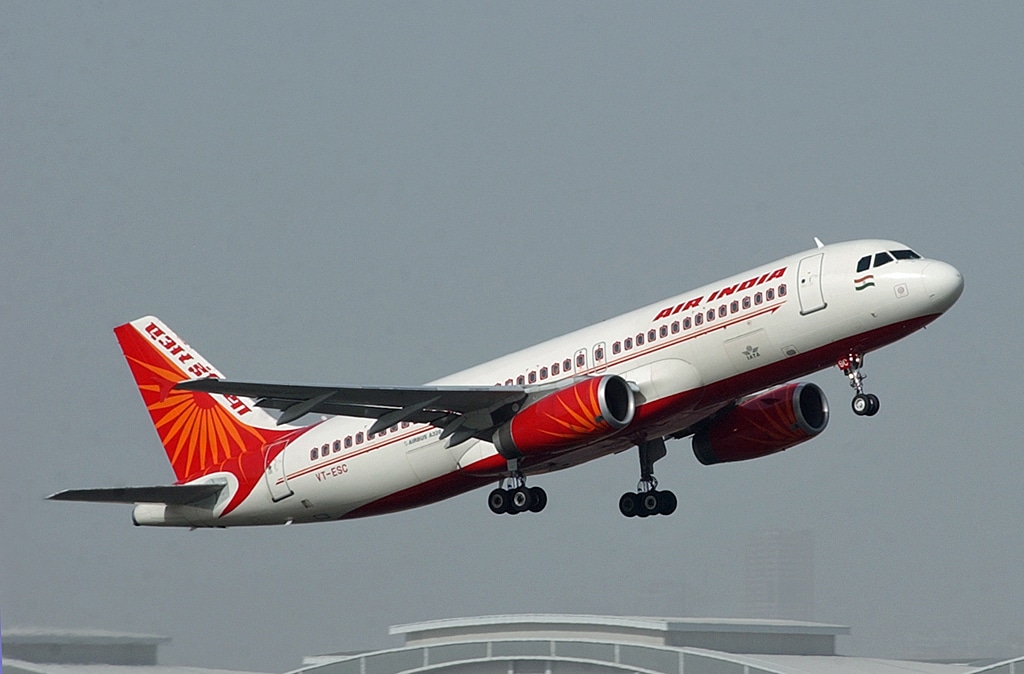Aerospace
Tata’s 5-year plan to make Air India great again
Air India today unveiled its comprehensive transformation plan, to establish itself, once again, as a world-class global airline

New Delhi, Sep 15, 2022 – Air India today unveiled its comprehensive transformation plan,
to establish itself, once again, as a world-class global airline with an Indian heart – the absolute
best in class in customer service, technology, product, reliability, and in hospitality.
The plan is fittingly titled “Vihaan.AI”, which in Sanskrit signifies the dawn of a new era, with
identified objectives for Air India over the next 5 years.
Air India will strive to increase its market share to at least 30% in the domestic market
As part of Vihaan.AI, Air India has put into place a detailed roadmap with clear milestones
focussing on dramatically growing both its network and fleet, developing a completely
revamped customer proposition, improving reliability and on-time performance, and taking a
leadership position in technology, sustainability, and innovation, while aggressively investing
behind the best industry talent. Over the next 5 years, Air India will strive to increase its market
share to at least 30% in the domestic market while significantly growing the international routes from
the present market share. The plan is aimed at putting Air India on a path to sustained growth,
profitability and market leadership.
The Airline’s CEO, Mr. Campbell Wilson along with senior management members who are
together driving this transformation, unveiled the Vihaan.AI plan with the entire organization
through Workplace, its virtual communication and engagement platform. Over the coming
days and weeks, the management team will engage employees across regions, departments,
and locations through a series of physical and hybrid sessions.
Vihaan.AI has been developed after extensive feedback from Air India employees
Employees on their aspirations and hopes for the airline’s growth. Vihaan.AI focuses on five key pillars,
exceptional customer experience, robust operations, industry-best talent, industry
leadership, and commercial efficiency and profitability. While the immediate focus of the
airline remains on fixing the basics and readying itself for growth (Taxiing Phase), the more
medium-to-long term focus will be on building for excellence and establishing scale to
become a global industry leader (Take Off & Climb phases).
90 years ago, exactly a month from today, a young JRD Tata piloted the first flight of the
airline that would become Air India. Since then, Air India and its employees have persevered
through many challenges before its homecoming back to the Tata group. Vihaan.AI is the
roadmap to restoring Air India on the global map, making it the world-class, digital, Indian
airline it is meant to be.
Top 5 best leadership traits that set Emirates besides other airlines.(Opens in a new browser tab)
Air India is the world-class airline
Commenting on Vihaan.AI, Mr. Campbell Wilson, MD, and CEO, Air India said, “This is the
beginning of a historic transformation for Air India and the dawn of a new era. We are laying
the foundation for a brave new Air India, with a renewed sense of purpose and incredible
momentum. Vihaan.AI is our transformation plan to make Air India the world-class airline it
once was, and it deserves to be again. We are absolutely focussed on being recognized
as a world-class airline serving global customers, with a proudly Indian heart.”
How Embraer E195 will be the best fit for Air India

Aerospace
When Ratan Tata was denied entry to the airfield at the Aero India show, he waited

During our visit to Aero India 2019, we had the unexpected opportunity to see Ratan Tata at the event, which was a thrilling moment for us. However, there was a surprising hiccup when the security staff didn’t allow him to enter due to a lack of a security pass.
Despite this, he remained calm and patiently waited for about 20 minutes until a member of the Tata team brought him the required pass, after which he calmly proceeded inside. It was a humbling sight, showcasing his composed demeanor even in such situations.
Ratan Tata ji is not only a renowned industrialist but also a trained pilot, holding a pilot’s license. In 2007, he became the first Indian civilian to fly the F-16 Falcon during the Aero India show in Bangalore—a proud moment for the nation.
His passion for aviation extended beyond flying, as he played a key role in shaping India’s aerospace industry. Under his leadership, Tata ventured into manufacturing and maintaining aerospace components while upholding its legacy of quality. Notably, Tata’s collaboration with Airbus to develop and manufacture the C295 aircraft is a testament to its growing influence in the sector.
-

 Aviation2 months ago
Aviation2 months agoMicrosoft Flight Simulator Raises $3 Million to Bring Back the An-225 Mriya
-

 Airlines2 months ago
Airlines2 months agoQatar Citizens Can Travel to the United States Without a Visa
-

 Aviation2 months ago
Aviation2 months agoQatar Airways bans these new Electronic Devices on plane
-

 Airlines2 months ago
Airlines2 months agoJapan Airlines Rolls Out Free Domestic Flights to International Passengers
-

 Defence2 months ago
Defence2 months agoWhich Country Has the Largest Fleet of Fighter Aircraft?
-

 Airport2 months ago
Airport2 months agoWestern Sydney Airport Welcomes Its First Plane After 6 Years of construction
-

 Travel2 months ago
Travel2 months agoQatar Airways Launches Four Additional Flights from Amsterdam
-

 Aviation2 months ago
Aviation2 months agoDid you know ? Once Boeing 747 carried 1088 passenger in 1991








